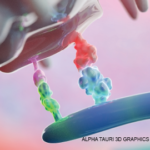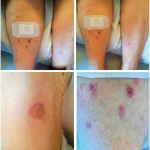First: do different types of myositis have different interferon (IFN) gene signatures? The answer to this question appears to be yes. In a paper from Pinal-Fernandez and colleagues, the expression of IFN1-inducible genes was high in patients with DM, moderate in patients with AS, and low in patients with IMNM. With regards to IFN2-inducible genes, these are high in patients with DM, IBM, and AS but appear to be low in those with IMNM.1 These IFN gene signatures may prove to be helpful both in understanding the pathophysiology of disease and in identifying treatment targets for future therapeutics.
The second question that Dr. Mammen asked was: Can transcriptomic data be used to make a diagnosis? For this, he pointed to additional work by Pinal-Fernandez and colleagues that shows how transcriptomic analysis may be better than muscle biopsy-based histopathology in making a diagnosis in patients with myositis. In one study, RNA sequencing was applied to muscle biopsies in 119 patients with myositis (either IBM or defined myositis specific autoantibodies) and 20 controls. Machine learning algorithms were trained using transciptomic data, and specific recursive feature elimination was employed to identify the genes most useful for classifying muscle biopsies into each type and MSA-defined subtype of myositis. Ultimately, the machine learning algorithm classified the muscle biopsies with more than 90% accuracy.2
Research studies such as this indicate that the marriage between transcriptomic analysis and machine learning may prove to be fruitful in correctly diagnosing many patients with specific forms of myositis in the future.
The third question that Dr. Mammen sought to answer was: is ICI-myositis one entity? Again, the work of Pinal-Fernandez and colleagues has shown that there are actually three types of ICI-myositis, and these are ICI-DM, ICI-MYO1 and ICI-MYO2. While the interleukin-6 (IL-6) pathway was overexpressed in all three of these groups, only ICI-MYO1 patients developed myocarditis. These patients also had highly inflammatory features on muscle biopsy. In contrast, patients with ICI-MYO2 had mostly necrotizing pathology and low levels of muscle inflammation.3
Dr. Mammen explained that these findings help clinicians to better understand ICI-myositis as a whole, which is still a relatively newly described entity, but one that will be increasingly important as more and more ICI therapies are applied to patients with cancer.
3 New Genome-Wide Associations Identified
The second speaker in the session was Christopher Amos, PhD, professor and chief of medicine, epidemiology and population science, Baylor College of Medicine, Houston, Texas, who discussed additional novel findings regarding genetic analysis in patients with myositis. In a significant paper from this past year, Dr. Amos and colleagues analyzed more than 2,500 samples from white patients with idiopathic inflammatory myopathies (IIM) collected through the Myositis Genetics Consortium (MYOGEN), as well as more than 10,000 ethnically matched control samples. Dr. Amos and colleagues then imputed over 1.6 million variants from the ImmunoChip array using the Haplotype Reference Consortium panel and conducted an association analysis.



